
views
Cleaning Vinyl
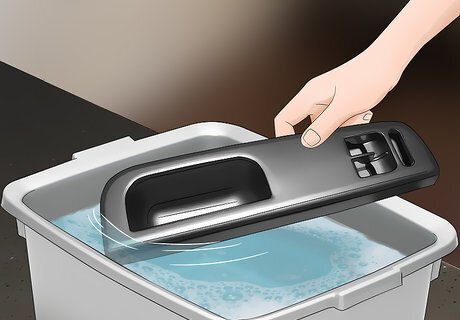
Soak the item in hot, soapy water. With some vinyl, you can simply soak it in a mixture of hot tap water and a dash of dish soap. This mixture will release most of the grime, and then you can rub it down with a cloth or sponge to help remove the rest of the grime. Rinse off the soap when you're done.
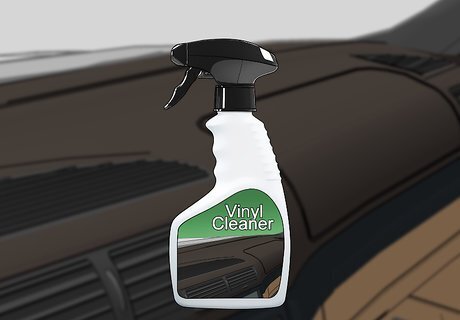
Try a cleaner specifically made for the type of vinyl you're cleaning. For instance, you can find cleaners specifically for convertible car tops and dashboards, or alternatively, for things like vinyl siding and vinyl floors. Picking one specific to the object helps it to be more effective.

Rub the cleaner in with a soft cloth. Use gentle, small circles to massage the cleaner into the vinyl. Don't scrub too hard, as that could damage the vinyl. However, you do want to go over it several times to make sure you're getting up the dirt and grime. Always read the directions for your specific cleaner, as it may have different suggestions for how to use the cleaner.

Remove the cleaner. With some vinyl cleaners, you'll simply need to wipe up the excess cleaner after it sits for a minute or 2. With other cleaners, you'll need to use water to wash it away. Use a hose or bucket to pour water over the object if possible. If not, rinse your cloth and apply clean water over and over until the surface is clean.
Repairing Cracks in Vinyl
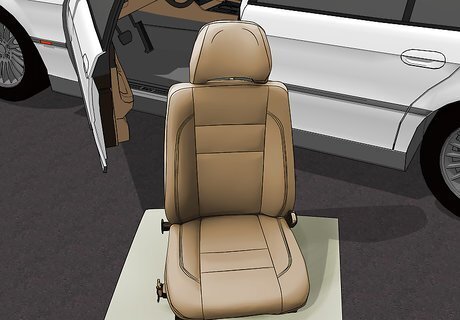
Pull out the vinyl piece to make cracks easily accessible. Whether the crack is in something like the dashboard or something else like a seat or even a restaurant booth, you need to be able to access the whole crack. You may need to take the dashboard or seat out of the car, for instance, so you can repair it. If you're not sure how to remove the item, look in your manual or check online for a tutorial.
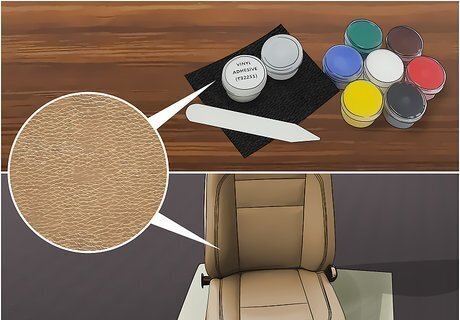
Pick a grain paper that's similar in texture to the vinyl. Grain paper is basically a mold that gives the cracked area a similar texture as the rest of the vinyl. You can find grain paper in auto repair shops. Look for a vinyl repair kit to find grain paper.
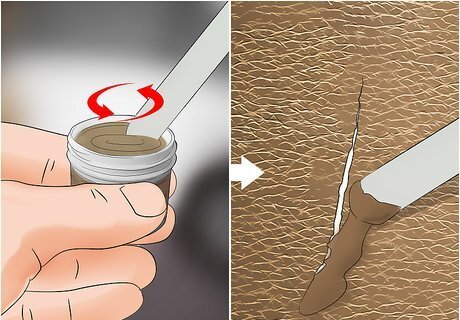
Make a "puddle mold" with vinyl repair compound. Mix up a vinyl repair compound until it's a thick paste, following the directions that came with the kit. Apply it to the cracked area, making sure to get down into the crack well. Start with a light layer. You don't need to fill in the whole crack at once. Pick a compound that matches the rest of the vinyl color. Filling the crack in with layers increases the strength of the repairs.
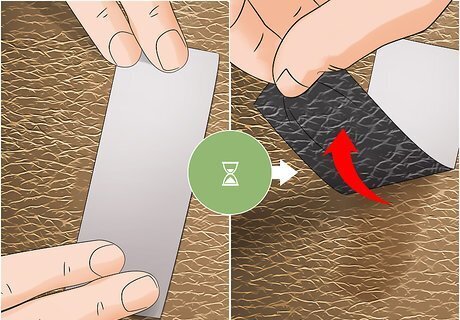
Cover the compound with your grain paper. Lay the grain paper on top of the compound. Leave the compound to dry for the recommended amount of time. When it's dry, peel up the paper, leaving the compound behind. Apply several layers this way until the crack is sealed.
Resurfacing Interior Trim Vinyl on Cars
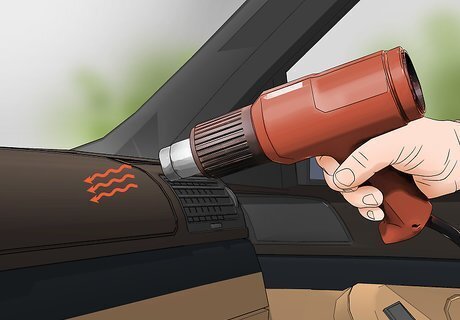
Run a heat gun over a weathered piece of vinyl. If your vinyl is just looking weathered and faded, a heat gun can bring it back to life. Run the heat gun over the whole thing, moving back and forth so you don't stay in one spot too long. Basically, you want to gently melt the top layer of the vinyl, which in turn will give it a glossy shine. You can find heat guns in auto repair shops. Basically, they're like blow dryers, except they get much hotter, so they allow you to heat things that require higher temperatures. If you leave a heat gun over one spot for too long, the vinyl may come off.
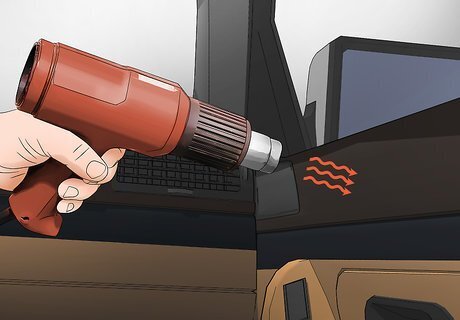
Use a heat gun to heat up spotty areas. Run the heat gun over areas on vinyl trim in your car that have lost their grain. Keep going over the area so that the plastic begins to melt. It should look glossy before you move on to the next step. Put on a heat-proof glove to protect your hand from the heat.
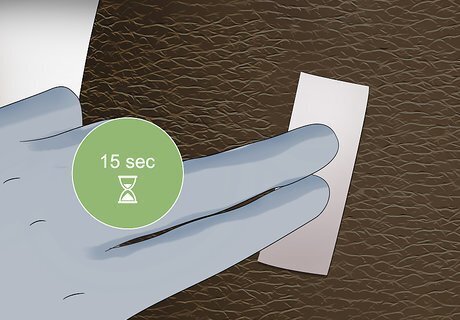
Apply a piece of vinyl grain over the glossy area. Place the paper grain-side down on the wet area. Hold it in place with your gloved hand over the area for 10-15 seconds, pressing down as you do. Peel the paper back and check on the repair. If it leaves bits of vinyl on the grain paper, make sure to scrap it off before doing the process again. Repeat if it didn't take the grain pattern the first time.

Apply a resurfacing product over repairs. Spray a vinyl resurfacing product over the whole object. Follow the directions on the product. Maintain a distance of about 1 foot (0.30 m) and move over the product in a back-and-forth motion to create an even coating. Keep in mind that most resurfacing products won't fill in cracks and scratches. You should fill those in ahead of time as needed. Let it dry when you're done.
Restoring Other Types of Vinyl
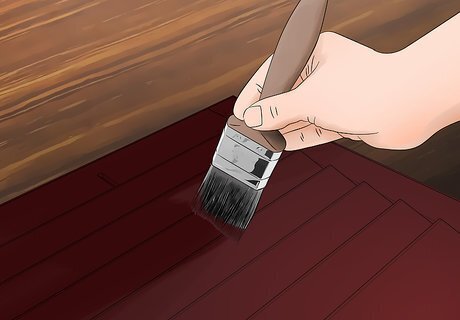
Paint over old shutters to restore them. If your vinyl shutters are looking worn down, a coat of paint can do wonders. Pick an exterior acrylic latex paint designed for plastic. Take the shutters down to make the painting process easier. Lay them out on a tarp, and paint them with a paint brush. Start with clean shutters. If yours are dirty, spray them down with a mixture of 1 part bleach to 4 parts water. Rinse them off. Mix a bit of dishwashing soap with warm water, and use a scrubbing brush to remove dirt. Rinse the shutters, and let them dry. A primer may help the paint stick better. Pick a color that's the same shade or lighter as the original shutters. Darker colors may cause the shutters to bend due to extra heat.
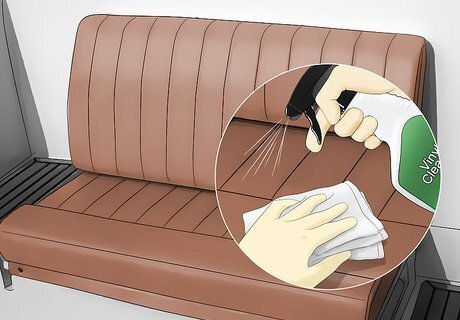
Clean and restore boat upholstery vinyl. Separate the cushion from the seat if possible, so you can clean the whole thing at once. Remove the caked-on dirt with plain water and a scrubbing pad or sponge. Apply a combination vinyl and polish cleaner. Use the same sponge or scrubber to rub it into the vinyl. Take off any excess polish and dirt with a clean paper towel.
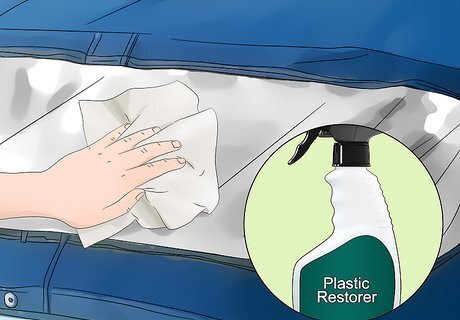
Fix clear vinyl windows on boats with a plastic restorer and polish. Start with clean windows, and dry the windows off by hand with a cloth. Rub on a plastic restorer in gentle circles, and then buff it out with a microfiber towel. Do the same with a plastic polish. Spray on a window wax or clear plastic treatment, and use a microfiber towel to rub it in. To clean the windows, rinse them off with water first. Clean off salt spots with a soft rag and a mild soap, and then rinse the area again. Wipe them down with a cloth to dry them. The wax or plastic treatment helps maintain the look of the clear plastic panel.

















Comments
0 comment